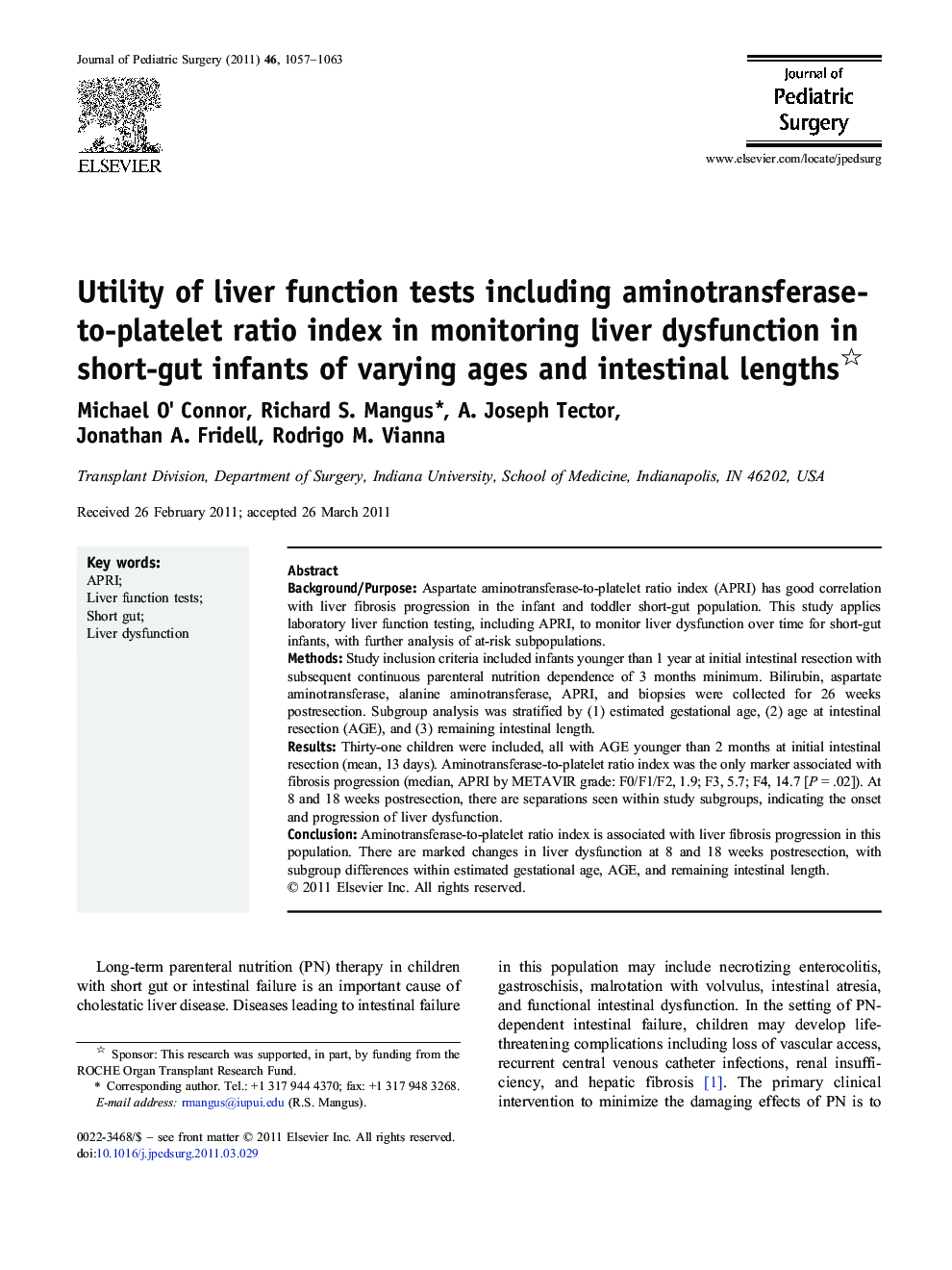| Article ID | Journal | Published Year | Pages | File Type |
|---|---|---|---|---|
| 4157072 | Journal of Pediatric Surgery | 2011 | 7 Pages |
Background/PurposeAspartate aminotransferase-to-platelet ratio index (APRI) has good correlation with liver fibrosis progression in the infant and toddler short-gut population. This study applies laboratory liver function testing, including APRI, to monitor liver dysfunction over time for short-gut infants, with further analysis of at-risk subpopulations.MethodsStudy inclusion criteria included infants younger than 1 year at initial intestinal resection with subsequent continuous parenteral nutrition dependence of 3 months minimum. Bilirubin, aspartate aminotransferase, alanine aminotransferase, APRI, and biopsies were collected for 26 weeks postresection. Subgroup analysis was stratified by (1) estimated gestational age, (2) age at intestinal resection (AGE), and (3) remaining intestinal length.ResultsThirty-one children were included, all with AGE younger than 2 months at initial intestinal resection (mean, 13 days). Aminotransferase-to-platelet ratio index was the only marker associated with fibrosis progression (median, APRI by METAVIR grade: F0/F1/F2, 1.9; F3, 5.7; F4, 14.7 [P = .02]). At 8 and 18 weeks postresection, there are separations seen within study subgroups, indicating the onset and progression of liver dysfunction.ConclusionAminotransferase-to-platelet ratio index is associated with liver fibrosis progression in this population. There are marked changes in liver dysfunction at 8 and 18 weeks postresection, with subgroup differences within estimated gestational age, AGE, and remaining intestinal length.
